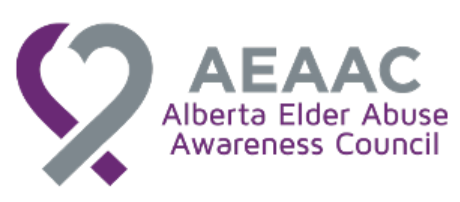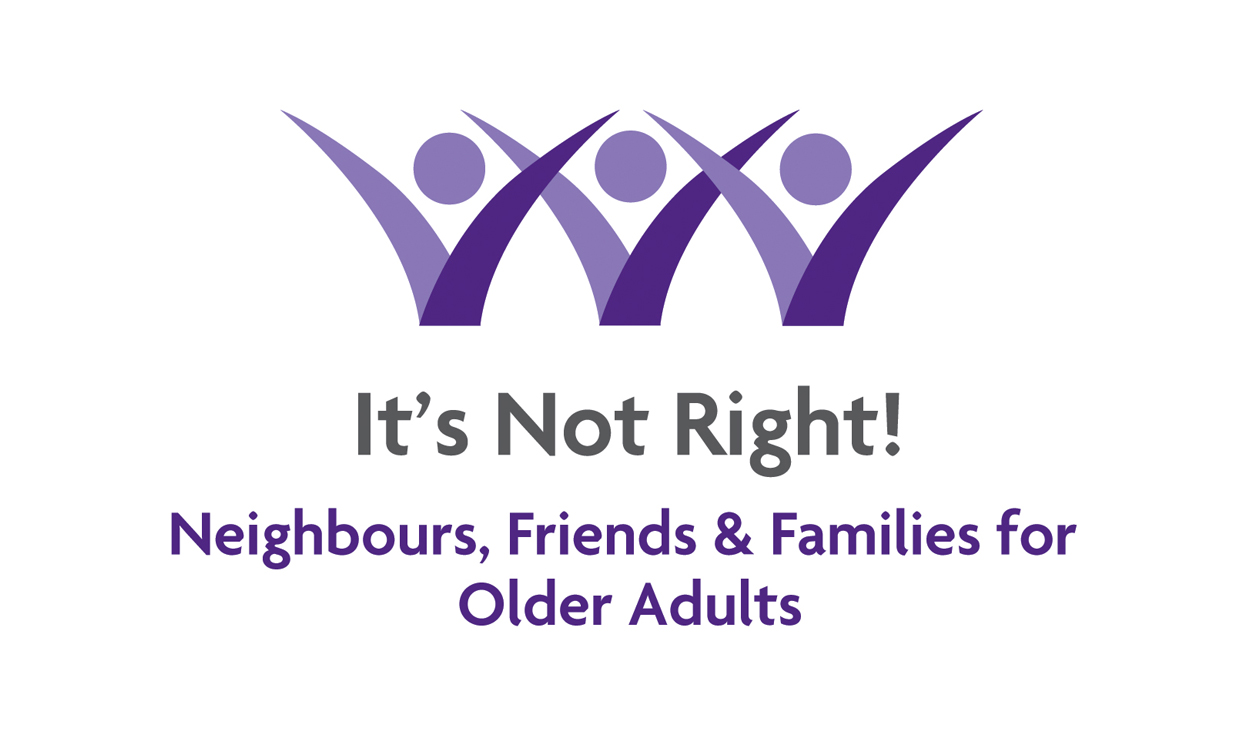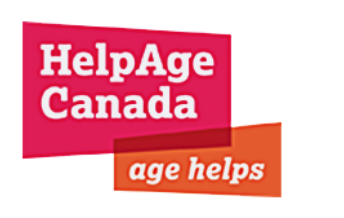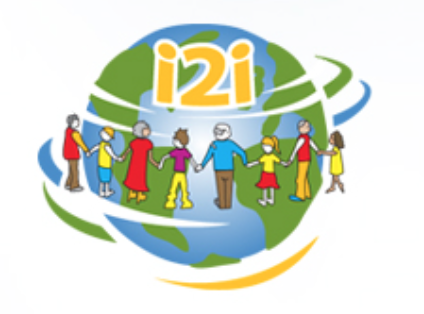Blog
- Details
Interview with Lillian Nakamura Maguire, Yukon Public Legal Education Association
CNPEA: How is the legal education of older adults an important step in reducing elder abuse?
Lillian: If people have access to legal tools and are able to put them in place to handle legal matters, healthcare decisions or financial matters, it can hopefully prevent an abusive situation from happening in the first place. It is equally important to educate caregivers, friends and family members. The information sheets available on our website summarize complex issues such as wills, advanced directives and so on. Trying to present information in as many understandable, plain language means as possible is really important. We have a lot of print information on our website, but this is just one aspect of our work. We also do community presentations and outreach. On our website we also have an animated video called My Friend Anne which is bilingual and relatable for people in the North. Recognizing that ageist attitudes can lead to abusive type situations is very important.
CNPEA: In your practice, how do you connect with older seniors and elder abuse stakeholders from rural Yukon communities?
Lillian: Because I have lived in the Yukon for quite a while I’ve used personal contacts to get into many rural communities. In Yukon we have a lot of satellite college campuses that I have used to connect with communities as well as nurses, social workers, elder support workers and seniors groups themselves. There is also a Yukon Council on Aging that has been very helpful.
One of the first things I did in this project was form a stakeholder advisory group that represents the diversity of the North and is very helpful in reaching people. We also use webinars to connect people across geographic barriers. We did one pilot webinar on enduring powers of attorney in Whitehorse with 2 other groups outside of the city. This took a lot of technical support to set up but was a good way to connect with people.
CNPEA: How does your project work to empower older adults?
Lillian: I believe that if people have education it provides them with information to make better decisions. Because we are a legal education association we have concentrated on the legal tools that give people more control over their finances, legal affairs and health matters. In a sense you provide people with education and encourage them to put things in place to help them take control of their situations. Emphasis is on preventing abuse from happening in the first place.
I find it is easier to have a conversation about abuse of older adults by beginning with legal tools. For example, with powers of attorney we can have a conversation around should you become incapable how to select someone who is trustworthy and would be a good attorney. If you advertise a session about abuse nobody would show up; but if you advertise a session on wills or power of attorney people are more comfortable and you may be able to talk about those issues and have the conversation that touches on abuse once you develop some trust.
CNPEA: Is there anything else you would like to share about your project? What are the next steps?
Lillian: This project ends March 2015, so we want to make sure as much as possible gets done. There is a need for a community support network for the prevention of abuse of older adults and we are trying to form a local network to support community practice. We are connecting with women’s groups, transition homes, victim services, the Department of Justice, Golden Age Society, Yukon Council on Aging, RCMP and getting these groups together to work in a more cohesive way to address common issues and challenges.
Often agencies work in isolation from each other, so sometimes if a person is experiencing abuse they may not necessarily know who to turn to. If they go to the RCMP or Adult Protection the issue is out of their hands as soon as they report the crime, and it is all confidential information, so the person who reported the abuse may never find out what happened. There are these systems that are put in place that prevent people from working together. We hope to change that. The other major thing is we applied for Crime Prevention funding from the Yukon Government and will soon begin Neighborhood, Friends and Family training in the Yukon.
To access any of their legal information resources go to the YPLEA website.
- Details
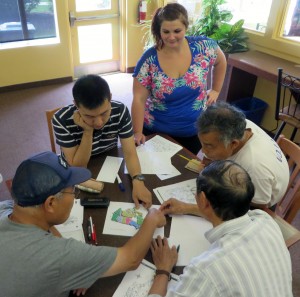 Interview with: Karen Kew, Community Integration Coordinator, Immigrant Services, Guelph Wellington
Interview with: Karen Kew, Community Integration Coordinator, Immigrant Services, Guelph Wellington
CNPEA: What is a mutual aid model and how does your project use it to support immigrant seniors?
Karen: The mutual aid model has been used in various environments and is similar to a self-help or peer support group model where people come together to tackle a problem and where groups form under many features of a community development model such as: autonomy, empowerment, lifelong learning and knowledge sharing. Ideally the learning comes from the group itself. The challenges are not knowing: how the group will come together; how they will support each other; what type of challenges will arise; and how much organizational work they can do on their own.
What we have found in terms of group formation is that the seniors groups really appreciate the organizational support that we provide. We did some training around the self-help model with the expectation that the trained seniors would then go on to start and run their own groups. Without organizational support it was very difficult to get the groups going and for the organizer to stay motivated. We learned that seniors really need organizational support to thrive because it creates a support network for the group. This could be something as simple as helping the group find a space and making warm referrals in the community.
CNPEA: What are you planning to include in the community toolkit and how can it be used?
Karen: The community toolkit is our main deliverable and will be accessible on our website in early 2015. Our target audiences are seniors, community members and grassroots organizations. The tools walk you through, in plain English, very basic steps for how to start a group, including, recruiting volunteers, volunteer management and working with immigrant seniors. We have created content for the following five main areas; Understanding Elder Abuse, Working with Diverse Communities, How to Start a Group, Complementary Income and Lifelong Learning.
Within the Lifelong Learning section we focus on three types of learning that we have noticed immigrant seniors really appreciate: computer clubs for learning computer literacy, English language practice groups, and wellness programs. In the wellness program we are bringing together the experience of being an immigrant senior with elder abuse awareness and physical and mental health. The mental wellbeing component in particular is really important because there are so many factors for an immigrant senior that intersect with mental health, for example not speaking English can be a barrier to accessing services, which can lead to isolation and so on. If there is a group that, for example, wants to start a yoga group, we have a tool that identifies gentle yoga exercises and also how to incorporate elder abuse awareness, family dynamics and mental well-being lessons into the program.
CNPEA: What strategies has your project used to engage isolated seniors?
Karen: We identified very early on that language is a huge barrier that isolates seniors. We worked to promote the importance of providing interpretation services with service providers and their front line staff, recognizing that interpreters are helpful but cannot address all community development needs. We shifted our focus from recruiting to our programs seniors who already speak English to encouraging specific language communities to start their own groups. Our community development approach is to engage people in various communities to support these groups. We find that intergenerational groups and activities that involve immigrant youth in particular are the most successful.
When Project Wisdom first started in 2010, there was a perception that immigrant seniors would not easily speak about their difficulties. We’ve discovered that immigrant seniors can and do speak about their challenges—but only if a safe space exists. Our settlement counselors received elder abuse training and are using better methods to identify potential cases of abuse and connect seniors with service providers in the community. Interpretation really helps, especially if the senior is in the hospital or a crisis setting.
CNPEA: What else would you like to share about your project?
Karen: We are also exploring using social enterprise components inside a mutual aid model. This allows the program to provide a little bit of extra income for seniors, especially for those who have low or no English skills and who may be totally financially dependent on their adult children under sponsorship agreements, while still using group peer support as a way to reach isolated seniors. There is a Knit a Knot social enterprise group that meets fairly regularly, but are not a knitting group per say; rather, they meet to drop off patterns and pick up wool. This group works well because they are goal-orientated seniors who have a way to connect with others for peer support when needed. If they do not feel comfortable coming out of their house to attend formal programming they can still participate at home and know they are a part of something bigger. Even the little bit of extra income that they can earn through this program is very significant as it can make the difference of being able to say, buy a buss pass and have access to transportation or not. The group is very straightforward and participants knit very simple, easy to learn patterns such as headbands.
- Details
Interview with Janet Wilson, Violence Against Women and Healthy Family Programs, Family Services Toronto
CNPEA: How does the Healthy Families, Safer Families Project peer support model work?
Janet: I’m a big believer in the peer support model because it’s not only about getting support to seniors, but also empowering seniors to give support. Peer seniors who provide support feel as though they have something offer which increases agency, self-efficacy and resilience. Seniors appreciate receiving support from someone who has had a similar lived experience, is from the same culture and who speaks their preferred language. Peer leaders were trained to provide peer support and were given information and resources that would be helpful to a senior experiencing abuse. In addition to peer support, seniors, their families and the community members at large were offered educational workshops on the issue of elder abuse. Each community used peer support in a way that suited their community.
CNPEA: Can you tell us about how you used different strategies to work with different ethno-cultural communities?
Janet: The Spanish speaking community, in Toronto, is very volunteer based, so in this community we trained 40 volunteers who wanted to be peer leaders, and offered honoraria for each day of training in which they participated. 10 of these trainers worked on advocacy issues related to elder abuse and presented at seniors groups in the community. Other peer leaders, who were already involved in volunteering with our partner organization on a seniors support line, were given more education and knowledge about elder abuse, so that when a senior calls they know how to guide them to appropriate services. We also continue to host a movie morning series, where we show a movie that has something to do with seniors and elder abuse. The movies are quite varied and can be romances, comedies or other dramas, as long as they have a scene related to an elder abuse situation. Our peer leaders then use the movie to lead the group of seniors into conversations about elder abuse.
In the Somali community volunteerism is not as prevalent. These seniors come from a war torn country and their priority is often settling and adjusting to life in Canada. As a result, we decided to hire 5-6 peer leaders who were also trained to provide peer support, information and referrals to other seniors. As seniors from ethno-cultural communities are often looking after their grandchildren, many are isolated. Because the Somali community in Toronto is in a specific geographic location, peer leaders were able to identify apartment buildings with a high density of Somali seniors living there. This facilitated connecting with seniors through door to door outreach. The seniors were offered accompaniment to appointments, doctor visits and so on. Through outreach we were able to recruit over 40 Somali senior volunteers. Peer leaders have also facilitated small groups, and have provided one to one support through drop-ins at seniors centres.
CNPEA: In what ways do you connect with isolated seniors? What strategies were most successful?
Janet: Both communities were connected with media, particularly the radio. So, even if a senior is isolated this was one way to connect them with the outside world and us to them. Through a Spanish-speaking radio station, we established a weekly show focusing on seniors’ issues, including the topic of elder abuse. We also managed to speak about the issue on three Somali radio shows.
The Spanish-speaking group created calendars, with elder abuse information and resources on each page. These calendars are in high demand and this year we are sending out 3000 copies. In addition to reaching out via radio and a calendar, we recognized that a lot of seniors would make more of an effort to attend programming that was fun and enjoyable rather than something on elder abuse directly. That’s why we started the movie mornings. They are more appealing for seniors
Outreach with the Somali was largely achieved by going door to door and by creating easily accessed space to hold drop-in programming. Instead of creating a calendar, the Somali community, having a strong oral tradition, decided to write a book of seniors’ stories and poems illustrating their resiliency, which will be shared with the whole community.
CNPEA: Working with two culturally and linguistically unique communities, Somali and Spanish-speaking, have you noticed any similarities in challenges or strengths?
Janet: In addition to what I mentioned earlier with regard to different engagement strategies, the Somali community, like other communities that have experienced war in their homeland their primary focus was on surviving the greater violence of war, rather than what’s happening in their own home. In fact, in the Somali language there is no word for ‘abuse’. Both immigrant communities had similar cultural values, where the family expects them to hand over their income and put it towards a family shared income. The potential for financial abuse is present in both communities. Because the peer support model is a very grassroots model, it appeals to and can be easily applied in most communities—so this approach proved to be extremely effective.
CNPEA: What advice would you give to a project hoping to explore ethno-cultural community engagement?
Janet: Ethno-cultural community work needs to be very flexible. The intrinsic aspects of community engagement are applicable, but have to be adapted to suit each community. Build on the strengths and go with outreach methods that work for them. We worked with these two communities in particular because we had a pre-existing relationship with them and were able to hire people in the community who know the people and the issues well. It is important to be continually thinking of how to develop community capacity by strengthening the capacity of both individuals and organizations within the community.
Over the course of our project, we had three knowledge exchange meetings, bringing together the two distinct communities to share their learnings, challenges and strategies. This was of great interest to both communities, as it supported them to identify their similarities and their differences.
- Details
 Interview with Barb Hood, Executive Director and Carly Aasen, Director
Interview with Barb Hood, Executive Director and Carly Aasen, Director
NWT Seniors Society
CNPEA: How does your project prevent abuse of older adults?
The emphasis of this project is including the whole community in preventing abuse of older adults. We have led 14 Creating Safe Community workshops with elders, service providers, youth, RCMP and others to build action plans that are community specific. During the first day of the two-day workshops we first identify what abuse looks like in their communities—this is important because it can look really different in each community. On day two of the workshop we develop action plans to address these issues. We believe this process is helpful because while people often are aware of abuse, they may not know how to address it.
12 Intergenerational Connections projects were supported through Leading the Way. Initiatives ranged from Grandmother Walks in Fort Good Hope to elders visiting the preschool in Tulita—but all involved interactions between older adults and youth. For example, during the grandmother walks older women would walk with grandchildren and teach them about the plants and how to harvest them to use for traditional purposes. Summaries of each initiative are being compiled into an Intergenerational Handbook for distribution around the territory.
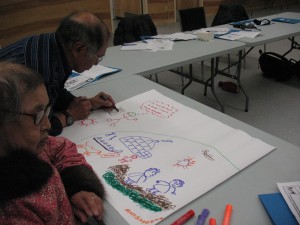 The NWT Seniors’ Society has also made an effort to support research related to older adults’, including a comparative research study on older adult abuse. This is huge for the North—the first comparative research study of this nature to have ever happened.
The NWT Seniors’ Society has also made an effort to support research related to older adults’, including a comparative research study on older adult abuse. This is huge for the North—the first comparative research study of this nature to have ever happened.
CNPEA: How does your project engage rural and remote practitioners? Do you have any promising tips you could share?
Often resources developed in the south are not transferable to a northern context. The Neighbours, Friends and Families project created specific videos relevant to the north, helping to provide engaging materials for service providers here. Overall, we have found that service providers are really interested in training as long as it is relevant and considerate of the language and culture of their community.
We have teamed up with other not-for-profit organizations and the Health and Social Services Department to help fund and deliver workshops to ensure older adults’ issues are represented and discussed. We have also done some training with nurses and social work students at the local college. In terms of engaging and maintain relationships, we find is it is best to work with the service providers that are already advocates in their community and provide them with any information or resources they require and we have available. Regular follow-up and consistent contact is important, because the rate of practitioner-turnover is relatively high in smaller northern communities.
CNPEA: What part of this project are you most proud of?
The relationships that have been created and the creditability this project has brought to the NWT Seniors’ Society. People are becoming more aware of us and trust our work. As more people learn about us, our Seniors’ Information Line is accessed and promoted in 33 distinct communities. The project itself is driven and guided by older adults. We are also proud of our research projects which have engaged over 500 adults and 100 service providers.
CNPEA: How do you plan to sustain this project?
We have a conference scheduled in the new year with the goal of discussing sustainability. We plan to bring together people who have been engaged in the project and other key players who care about the health and well-being of older adults to have a conversation about how we can move forward with limited funding. The results of our comparative research project will be presented during this conference. It is predicted that this study will give us a good idea of the current realities regarding elder abuse and potential next steps in moving forward. We hope our Strategy to Address Abuse of Older Adults in the NWT is adopted by legislature.
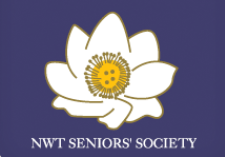 More information on the Leading the Way—Networking to Prevent Abuse of Older Adults project can be found on the NWT Seniors Society website or the website of the NWT Network to Prevent Abuse of Older Adults.
More information on the Leading the Way—Networking to Prevent Abuse of Older Adults project can be found on the NWT Seniors Society website or the website of the NWT Network to Prevent Abuse of Older Adults.
- Details
Thanks to Sandra Hurst and Susan McNeil for an excellent presentation at last week’s AGM on the newly published Registered Nurses Association of Ontario (RNAO) best practice resource for nurses on abuse and neglect of older adults. Download their presentation, Preventing and Addressing Abuse and Neglect of Older Adults: Person-Centred, Collaborative, System-Wide Approaches: CNPEA Presentation Sept 11, 2014 RNAO.
Download the RNAO toolkit.
Page 54 of 55





